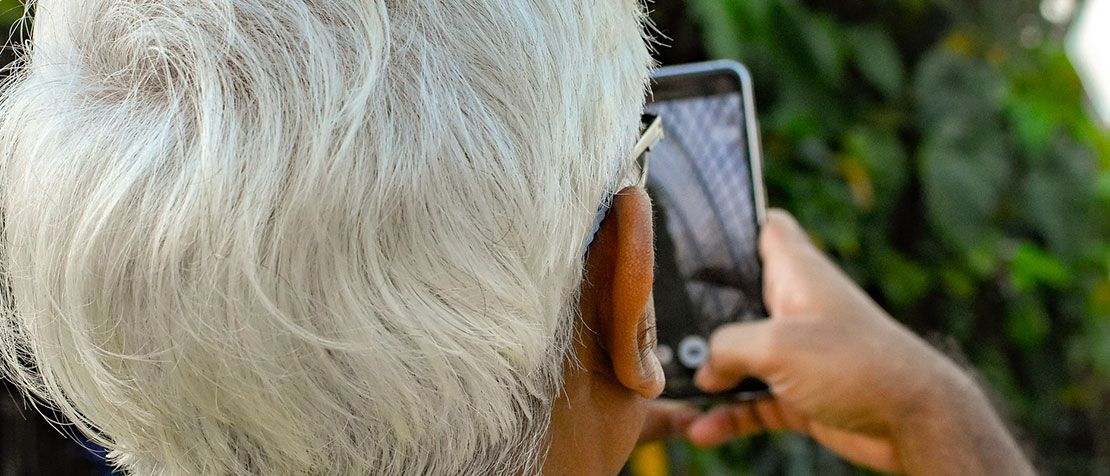
Technology for all means tapping into the ‘Silver Economy’
*This article has been republished with permission of the author and the Global Coalition on Aging. The original article can be found here.
Older people, globally, are consumers too.
The megatrend of global aging — 2 billion of us over 60 by mid-century, more old than young, getting to the 40 per cent level in super-aging places like Japan — presents as one of the least well-understood market opportunities for businesses, large and small, everywhere.
The first-ever global Silver Economy Forum, hosted by the Global Coalition on Aging (GCOA) and the Finnish government as they assumed the EU Presidency, was about the 17-trillion-USD ‘Silver Economy’ available to companies the world over.
And now in 2020, as that megatrend is joined by the global COVID-19 pandemic and those over 60 continue to hunker down, probably longer and more consistently than our children and grandchildren because of our particular vulnerability to the really bad effects of the virus, there is an online technology consumer play barely imagined a few years ago. The older demographic is playing as important a role as any in the global transformation of markets.
Beyond telehealth: ICTs and the Silver Economy
Yes, of course it’s the healthcare bit, including the linkages to the explosion in telehealth and telemedicine — doctor visits online to avoid public exposure, hospitals, and healthcare professional offices — but far more, different, and more rapidly than just health. Think a Zoom 70-year-old birthday celebration, the tens of thousands of virtual dinner parties older friends are having, or the number of 80-somethings buying online through Amazon, using PayPal, accessing groceries and learning. And it’s just starting but will forever transform how markets function for all of us, including and especially the older among us who are getting used to different modes of economic transaction. The linkage of the global Silver Economy — that of course includes elder home care; age-related conditions and treatments; and innovations around saving, spending, and retirement — has in our moment of the pandemic forever exploded to online daily economic activity. That is what makes the opening of the UN ITU’s World Summit on the Information Society (WSIS) both prescient and exciting; in its 15th year, WSIS will, for the first time ever, have a track on ICT (Information Communication Technology) and Older Persons.
ICTs are no longer thought to be the purview of a younger demographic but connect organically to the Silver Economy. If that was true in the WSIS planning since their participation in the GCOA-EU Silver Economy Forum in Finland, it is even more essential in the wake of COVID-19.
3 ways to think about an aging strategy
Nor is it a small matter to consider how this relates to a powerful piece in the Financial Times (FT) listing 100 global companies that are actually increasing their market caps during the crisis. As each considers how to continue their successes and others compete to find their way onto the list of top performers, a clear, powerful, but often overlooked platform would be to design and implement an aging strategy.
Many are already benefiting from the Silver Economy, but ignore that a more clear and dedicated aging strategy would give them access to the 17-trillion-USD global Silver Economy even as they contribute to doubling and tripling its size. Here are three ways to think about your aging strategy: 1. Age diversity: The 60-to-100 age demographic is as broad and diverse as, say, a group from 20 to 60. Your strategy has to understand and account for that age, health, and economic diversity and its impact on interest, need, and demands. And it might be a good idea to hire some older workers who can be part of your design, development, and marketing teams, just as today you would not consider a millennial strategy without some 30-somethings directly in the mix, or that very powerful gender market without women to help you understand and implement your product or service. 2. Culture of ageism: When an 82-year-old uses PayPal to buy stuff, a 63-year-old becomes an elder caregiver, or a 75-year-old is using Zoom to work from home, you know the old stereotypes are barriers to your growth strategy for tapping into this Silver Economy. This year, even as we struggle through COVID-19, the World Health Organization is launching the Decade of Healthy Ageing and the OECD is targeting their economic growth goals on OECD Ageing Societies. This is a megatrend that is not going away and, if anything, is becoming one of the engines for economic value, especially as we transition to next phases of COVID-19 and re-frame how to reignite the lost economic activity of 2020. 3. Innovation: From healthcare to banking, retail to transportation, education to entertainment, the innovations underway, not least reflected in the FT’s list of 100 companies prospering in the pandemic, are often unrecognized but benefiting from this age-demographic’s openness to and quick adoption of new stuff and new ways of using old stuff. This is the generation that in their lifetime has seen more innovation and economic and market change than ever before in human history. They’re used to it and are far more open and willing to be adopters than your preconceived ideas might imagine. Besides, that older demographic includes 60- to 75-year-olds who have been living with technology for a very long time, as well as that frail 80- or 90-something with different needs. Whether you’re Zoom, Alibaba, Amazon, or Shopify, an aging strategy can help you stay on the FT 100 company list and keep successfully competing for the top. And for all the rest of you, go for it, too!
